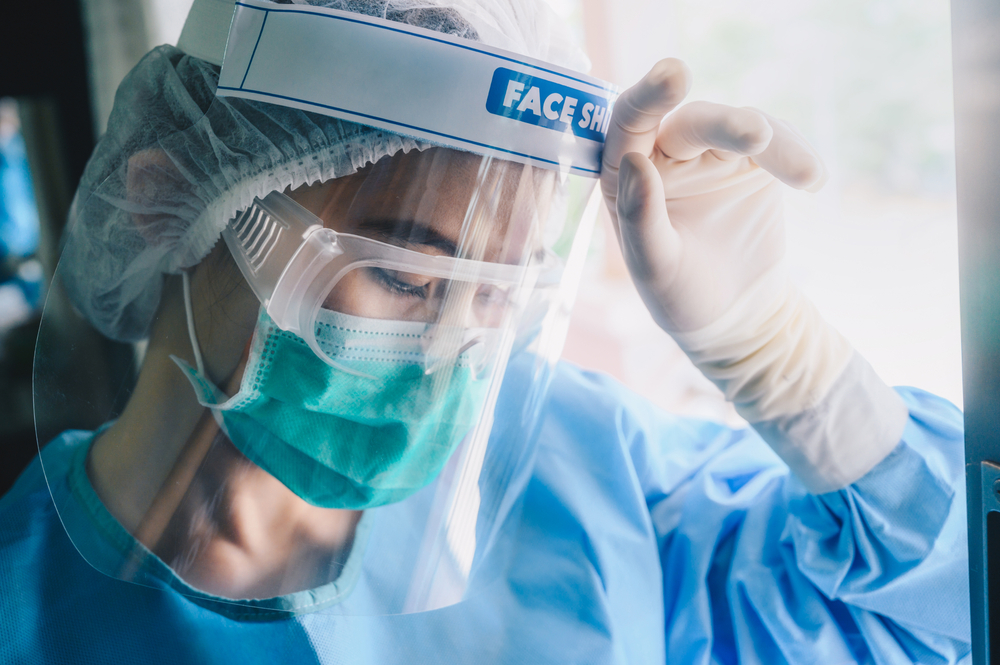When COVID-19 found its way into New York City, the healthcare system’s Achilles heel was exposed. Public health officials scrambled for resources as the pandemic approached. Many media outlets presented unfounded and unverifiable information to the general public, a backdrop to the chaos that was to ensue. As patient census continued to rise, the system buckled under the pressure of poor planning and delayed implementation of accessible resources. The vulnerable points in healthcare, inadequate nursing staffing, and a lack of adequate protective personal equipment (PPE) were underscored and gained notoriety to the general public.
With COVID-19 still a significant issue in most states and the possibility of a second wave looming, it’s not too soon to examine the choices made by the media, government officials, and hospital administrators and consider what needs to occur to avoid the chaos of the original pandemic, or, for that matter, the chaos of any sudden surge in patient census, whether from an infectious disease, natural disaster, or terror attack.
Media
Accountability and integrity of the media must be enforced and maintained. With the surge of COVID-19 cases, several media outlets, for example, The Washington Post and The New York Times, provided free electronic access of articles to the public.
Free access must also include a resistance to promote incendiary and unsubstantiated commentary where the general public is concerned. False information can ignite fear and inaccurate information can be quickly promulgated. When lives are lost or put at greater risk, media outlets must be held accountable. If they provide negligent and harmful information then a response of media malpractice should be required.
There is sufficient evidence to support the relationship between public health behavior and media reporting. For example, during flu season media fatigue or delayed reporting are directly related to general public awareness and implementation of health and safety protocols such as handwashing and social distancing. Therefore, media must take special care when over-reporting unsupported speculation and under-reporting verified facts with regard to guidelines such as mask usage, hygiene, treatments and other health directives. In the case of COVID-19, this is not about blame apportioning; the goal is to adjust the media responsibility and accountability should a second surge or an entirely new disaster occur.
Staffing
Amid the COVI-19 pandemic, the usual “all hands-on deck” approach was not sufficient to manage the rapid influx of cases that overwhelmed healthcare institutions. Hospitals, already understaffed at best, were poorly equipped to navigate the storm. The crisis was not only due to understaffing but also due to many nurses becoming sick themselves. Multiple facilities required skilled nurses and quick.
To combat the lack of staffing, government officials and hospital administrators recruited nurses from across the country to assist with what were then hazardous working conditions. These nurses took up the call to work, with many leaving their families to do so, but most received compensation and were not volunteers. From my (Singletary) vantage, seasoned nurses began to consider their personal value to the public health system, where the most nurses I work with have more than 10 years of experience within that system. When these nurses were assigned to our facility, they worked on contract for up to $150 per hour, over three times the salary of a full-time employee. Nurses I knew described feeling undervalued when learning that contract nurses were making these salaries.
When nurses bring themselves to the frontline, their value must be acknowledged and hazard pay should be for all, not just those hired to assist. The Hero Act, which touts financial compensation for frontline employees, must become legislation. When nurses answer the call, putting themselves and their loved ones at risk for disease or death, the institution has a responsibility to staff. Hospitals should establish a trust or insurance for situations such as these. Hazard pay and other compensation for frontline staff should not be dependent on government officials. A pandemic bill should be supported by all healthcare facilities.
Resources
In the media, there was no issue more publicly highlighted than the inadequate supply of PPE (N-95 gowns, masks and goggles). As more staff came on board, the PPE shortage became more apparent, and the CDC crisis standard of care was implemented. N95s were reused for up to 5 days.
Nurses were lauded in the media as heroes but they are unequivocally human beings with a passion for caring. There is a human side of nursing with mortal feelings of apprehension and fear. Nurses cannot be placed at greater risk for sustained apprehension and fear when providing care to ill people without adequate PPE. Hospitals and other health care organizations must partner with governmental officials to stockpile PPE sufficient for a pandemic wave, each wave predicted to persist for a period of 8 weeks. Practical solutions can be developed, such as a stockpile calculator to estimate an institution’s needs, based on annual usage, pandemic usage and weekly averages. Hospital administrators should take charge of these issues to avoid another PPE shortage in time of a pandemic.
Nurses also need training. Traditional disaster experience does not provide expertise, as each disaster can be quite different. Simulated pandemic drills must become part of onboarding and mandatory re-training.
Containment
The best response for a pandemic is containment; a precursor to containment is a critical and analytical assessment. Public health nurses have their fingers on the pulse of community spread of disease. When disasters occur affect the public, nurses must be prepared to respond to the events so they can reduce negative outcomes. With the understanding that patient zero could have presented anywhere, healthcare professionals need to be prudent and accurate assessors.
Many diagnostic tools for communicable disease help to identify presenting illness in symptomatic patients and are followed by the implementation of containment protocols. Containment is optimal, however, abatement of the spread is also dependent on identifying illness in an asymptomatic patient. According to Smith, this suggests that an asymptomatic “patient zero” may be elusive to diagnosis and containment is only successful through generalized testing of all people . Nurses will play a critical role in the education of the public to accept testing and isolation of those people who test positive as a solution to avoiding community spread.
A plan
We know that history cannot be re-written, but there can be a plan for a better response. Nurses have to consider how to prepare for the next wave or pandemic. Because disaster preparedness is so expansive, and encompasses prevention, preparedness, response, recovery and mitigation, these are a few solutions to consider. We need to explore the effects of the media, nurse staffing and compensation, resources, and containment for continued recovery and abatement. Nurses need to be at the table when we are determining realistic solutions for the future.
Kari Singletary is a staff nurse in the postanesthesia care unit at New York City Health & Hospital/Woodhull in New York City. Linda Paradiso is an assistant professor at CUNY School of Professional Studies in New York City.
References
Centers for Disease Control and Prevention. Pandemic intervals framework (PIF). 2016. cdc.gov/flu/pandemic-resources/national-strategy/intervals-framework.html
Collinson S, Khan K, Heffernan JM. The effects of media reports on disease spread and important public health measurements. Plos One. 2015;10(11):1-21.
Halyard. Pandemic Preparedness. Infectious Disease Outbreak Preparedness: Stockpiling of Personal Protective Equipment In Healthcare Settings. halyardhealth.com/media/188232/c1484_pandemic_preparedness_guide.pdf
Labrague L, Hammad K, Gloe D, et al. Disaster preparedness among nurses: a systematic review of literature. Int Nurs Rev. 2017;65(1):41-53.
Lowey NM. H.R.6800 – 116th Congress (2019-2020): The Heroes Act. congress.gov/bill/116th-congress/house-bill/6800I.
Smith N. Patient zero of Covid-19 pandemic may never be found. The Telegraph. 2020. telegraph.co.uk/news/2020/04/18/patient-zero-covid-19-pandemic-may-never-found/
Travers D, Gilboy N, Rosenau A. Pandemic influenza triage tools: User guide. Centers for Disease Control and Prevention. n.d. cdc.gov/cpr/healthcare/pan-flu-app/files/PITA-UserGuide.pdf



















1 Comment.
This is a very insightful article. Remember this is written by a nurse who is on the frontline. Excellent article.